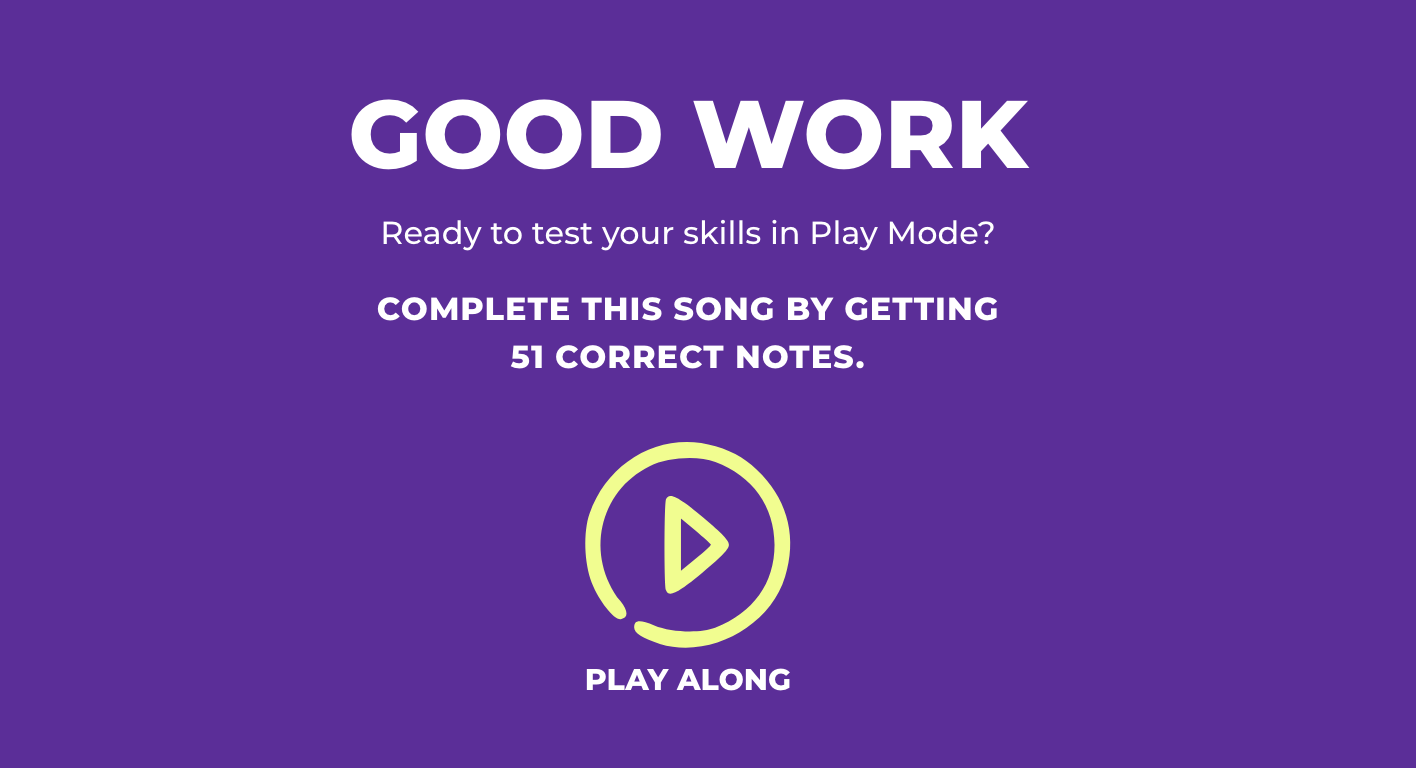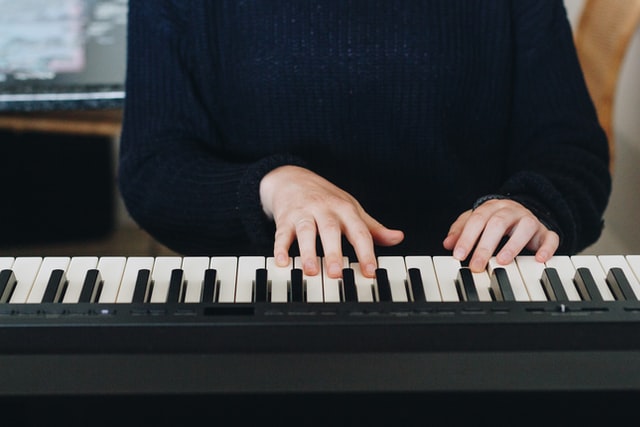Can piano games for kids be an effective way to learn? The age-old attitude of “games are bad for you” seems to be finally going. People are embracing the power of games when it comes to keeping children engaged. This means that you can almost teach children by stealth. Find something they are enjoying, make it competitive, and suddenly you have a game that can be turned into a method of learning the piano.
Piano games are especially good for use when teaching the absolute fundamentals of piano. Things like staying in time with music, learning notes and chords, and using the correct fingers, all can be taught using some really simple games.
Why Piano Games for Kids Work
We could spend a long time going into the numerous studies about piano games for kids, and other types of games in learning environments. The key thing to know is that they should not be ignored or discredited as a method of learning. Games have become far more intellectually engaging than “Pong” or whatever people had access to 30 or 40 years ago. Learning via games is becoming far more mainstream.
The simple answer to why piano games work for kids is threefold.
- It doesn’t feel like “work”. You can take advantage of the fact that children are likely to have far less objection to playing a game than to reading a textbook, for example. You’re not asking for a child to do something they perceive as incredibly boring.
- It’s easier to engage with a game. Games are designed to be fun and to challenge the brain in ways that a written block of text would not. When we get older, reading may become more enjoyable, but there are a number of different learning styles and some people would always prefer to learn via a game.
- Failure is not to be feared within a game. This is a big one. Without getting too much into the psychology behind it, children are conditioned to fail within games. “Game over” never actually means game over, it means “try again”. This way, children are less likely to get frustrated when things don’t quite go right. Think of the amount of times a child has to restart a level of a game normally, but this doesn’t usually deter them. We can harness that for teaching the piano.
We should state that it is clear that there are a number of different ways to take on information. Games aren’t the best way for everyone, but they certainly shouldn’t be discounted.
An Example of Games Helping Children Learn
Ok, so it isn’t piano, but this is still a very relevant point. Check out some of the things young people are learning how to do in Minecraft. Some schools have even embraced Minecraft to teach problem solving skills and much, much more.
And yes, Minecraft does have some musical uses, too…
How to Gamify Piano in Person
If you are teaching someone in a one-to-one environment and you want to turn your learning activity into a game, we urge you to get creative. You don’t have to research a ton of piano games for kids. Instead, you can come up with your own ways of doing things. Here are some examples, though, to get your mind flowing with ideas.
Remember that a lot of children will respond to things being made competitive or timed, just to turn it into a bit more of a competition. It’s more fun that way!
Spelling Words With Notes
Naturally, you are limited with the actual words that can be spelled out using just the notes of the piano. You only have A, B, C, D, E, F, and G to work with! This game can be played with cue cards, too. Print some pictures of things that children have to spell with the notes of the piano. Here are some example words:
- Cab
- Bed
- Face
- Bead
- Deed
- Bag
- Dad
There are loads more once you start to think about it…
The child then simply has to play the notes in the correct order to spell out the word. This is really simple, but it makes it a lot of fun, much like some of the “Speak and Spell’ style learning games that children may have at a young age.
If you have a couple of children playing then it can be even more fun as there is a competitive element to the game.
Clap On “One”
This is a game we call “clap on one”. It’s really simple, all you need is a metronome or a piece of music. After explaining rhythm and time signatures to children, and learning roughly how to count along to music, you can use this to cement the knowledge. Start by asking kids to clap on the first beat of the bar while a piece of music plays. ONE (clap), two, three, four, ONE (clap), two, three, four.
As you go on, this will become a really easy game, so freshen it up. Use different tempos, time signatures, and even alter which beat of the bar you are clapping on. Make it a “clap on two and four” game if you wish. This helps children to understand the tempo, rhythm, and structure of music.
Musical Staff Flash Cards
Learning the notes of the staff can be one of the most challenging things for young people who are playing the piano, so any piano games for kids that make this simpler are sure to be beneficial.
Make some flashcards showing the notes of the staff. Check out this amazing resource; the hard work has been done for you!
Once you have your flashcards, you can simply show them quickly and time the young person for how long it takes them to hit the right note. If you want to get more advanced, take the name of the note away from the flashcard. You can also do the same thing with chords.
If you are looking for piano games for kids to help them to one day be able to sight-read then this sort of game is an amazing start. It teaches speed as well, a key skill for those who want to be able to read music off a sheet and instantly be able to play it.
There are so many different ways to turn piano into a game. If you are tutoring one-to-one, you can tailor a game specifically to an area the kid you are helping might be struggling with.
Spot The Phrase
This is another method of learning where you will need to do some visual preparation, first. It involves you playing a short phrase on the piano, and then showing a multiple choice option of sheet music. Your learner just has to match up the correct sheet music to the phrase you have played. Start with just a few notes to keep it nice and simple.
Luckily, you can find thousands of pieces of sheet music available for free online, use these as a starting point for this game.
Frog and Snake
This is a drill to help you to learn your notes. The game involves the student being “the frog” and jumping between the lilypads that are the notes. These notes are specified by the teacher.
When they get to the top of the piano, they are chased by you, the “snake”. You “chase” the student down the piano by going down the piano note by note and trying to do it quicker than they can play every note specified. This is good fun, it adds a sense of urgency and it is great for younger players.
Check out this video below to show you exactly how the game works. You’ll need a quality digital piano that has 88-keys to get the most out of this game.
Interactive Piano Lessons
Children in the modern age can make use of all the incredible technology available to them. This includes interactive piano lessons which are halfway between game and piano lesson.
Take our Pianu academy as an example. We provide an opportunity for interactive lessons, meaning that you can plug in your MIDI keyboard using a USB-MIDI cable and then utilize the lessons which can tell you whether or not you have played the notes correctly. Notes appear on the staff and the player can then read these and play a note, melody, or chords in real-time. Pianu’s academy will then tell you how close you were to perfection.
This method of learning has not always been available. More and more piano learning sites and apps are seeking to create a way to make it feel a bit more like you are playing a game.
You can better understand exactly how interactive lessons work by taking part in a trial of our academy. Remember, Pianu is constantly being updated with new songs that you can use for this method of learning, too, so you can choose one of your favorites rather than just being stuck with whatever song you might be learning for school.
These kinds of encouraging messages are always great, and they show you how many of the notes you have played correctly on each run-through. There are also slo-mo modes and ways to play with your computer keyboard if you don’t have a MIDI keyboard handy.
Because the Pianu academy feels a bit like a game, for which your piano is the controller, it can keep youngsters engaged. A lot of piano games for kids can do this, but they also struggle when it comes to turning that into more specific knowledge, built around methods for playing the piano, and actually becoming a seasoned, professional musician. Because Pianu’s academy has a curriculum, built around the fundamentals of being able to play the piano, you are always working towards real knowledge.
It’s not strictly a “game” but if you have ever played this, then you will have some idea what it feels like to complete a song with top marks:
The difference between something like “Rock Band” and the courses which offer interactive lessons is the fact that you are actually learning how to play the musical notes with Pianu. Rock Band is a decent way to practice timing, but the buttons you are pressing have no real musical relevance. A good party game, but you won’t learn much.
Synthesia
A quick note on Synthesia. If you’ve looked for tutorials online for songs then it might well be the case that you have found some Synthesia tutorials. This game has a “Rock Band” feel to it, too. You can either use the music inbuilt with the library to learn songs as they appear to fall from the sky towards the notes of the piano. The layout is similar to Rock Band, or any of the similar games, but it has a bit more musical credence to it.
Synthesia hs a cost attached to it. It also has its pros and cons as a learning tool. One of the great things about it is that you can upload any MIDI file and use this as a way to learn the piano parts. MIDI files are available for thousands, even hundreds of thousands of songs.
One of the negatives is that while it might help you to play music by ear, you don’t actually learn any theory. You might learn how to play some songs, and if this is all you want to get out of your piano lessons then Synthesia can be a very good tool or game, but if you want to become a rounded musician, you might need a proper tool such as the academy or another full piano course.
There’s no problem with using Synthesia, but it is unlikely to be the only tool you need to learn how to play piano. Here’s an example of what Synthesia looks like.
Sporcle
Sporcle is a tool we expect to become more and more important for learning just about anything, not just playing the piano. Though Sporcle is known for quizzes, quizzes can be a great way to learn. For example, this quiz about the notes of the piano.
This is a bit like one of the card games we mentioned above with flashcards. It’s a visual quiz so it is more helpful than some of the other quizzes on Sporcle, but some of these are about music theory, and there is a lot of information to learn in a more “gamified” way via Sporcle and similar quiz websites.
Piano Apps – Are They Worth It?
There are a number of piano apps, both free and paid. A search in the app store will find plenty of games. Some are easy to play, and maybe very fun, but they might not teach you that much.
If you are looking to play the piano and want a game to teach you, you need to make sure it is actually teaching you either music theory, the notes, or the chords. Otherwise, we might end up with the same situation as playing Rock Band or similar console games, a lot of fun but not the most knowledge.
There are many “tile” games that involve pressing a tile to get a piano note to trigger. This is just adding extra steps to the learning process, so we don’t recommend it as a way to learn how to play the piano.
Console Games
The number of console games to help you to learn the piano is low, but there is an interesting piece of kit out there. The “Easy Piano” for DS could be a very good option for younger kids who love to play Nintendo DS. It even comes with a mini piano that helps teach the lessons within.
The game can be played using a stylus too, if you prefer.
It’s pretty limited. We wouldn’t recommend it for people whose ambition is to become the next Mozart, but to just spark a bit of interest in playing the piano among children this can be an amazing tool. It lets kids compose, too, which is a really rewarding thing for a lot of youngsters who want to give playing the piano a try.
The game promises to let you “unlock new outfits, pianos, and venues” so it is definitely aimed at younger children, but it is the sort of thing that lets them learn the basics without really feeling like they’ve invested a lot of time and effort.
Inventing Games With Kids
I love this trick, and it is something that you can do to really enhance a youngster’s knowledge of the piano. Why just play piano games for kids when you can make piano games for kids?
Children have such creative brains, and if you give an engaged child some tools and ask them to get creative inventing a game, you’ll be amazed what they come up with.
Card-based games, or just fun little exercises on the piano, don’t require a lot of resources. Pens, paper and a keyboard or piano might be everything you need to get a new and exciting game.
Frog and snake is a good example. Play this with your students first and see if they can come up with something similar. Use the piano as a way to communicate or to test yourself within the game.
The point of getting a child to make piano games for kids like themselves is that it means they have to understand the mechanics of the piano and how it works. It challenges them to really think about ways they can use the notes of a piano as a sort of “game controller”.
Piano Games for Kids vs Other Methods
Should you spend a lot of time and effort in finding piano games for kids? Is this really the best way to learn?
The answer is that there really needs to be a good mix and balance with where kids are getting their information from. Piano teaching should not get boring for them, otherwise, they will be more likely to give up.
Games, or a “gamified” way of learning new songs, can be a way to ensure that there is an interesting and engaging method for them to take advantage of.
One of the benefits of this sort of games is that they can be fun for the tutor, or, if you are using an interactive tool such as the Pianu academy, they can also be a great source of enjoyment and learning without having to actually have anyone else in the room. It is a form of self-teaching with the help of technology.
Other methods of learning how to play the piano include traditional courses, lessons with a teacher, lessons within school, and even some more modern methods such as video courses. As we have briefly already mentioned, there are so many different ways to learn how to play the piano, and everyone has a slightly different brain, meaning that different methods are more effective for certain people. If you find that piano games for kids don’t work as well, you might need to try a different game. Alternatively, you might just be teaching someone who will learn more easily by reading or watching videos. There’s nothing wrong with this method, either.
The truth is that most people end up using a variety of different methods. Piano games for kids prove to be just one small part of the learning program that builds their knowledge and turns them into accomplished piano players.
Conclusion – Why Piano Games for Kids are a Good Idea
Turning things into a game as a learning technique is nothing new. If you’ve ever learned a language, or even learned to “sing” the alphabet as a child, you’ve taken part yourself.
Games may not be the only tool you use to teach children how to play the piano, but they can provide a break from lessons and watching tutorials and give kids an activity that is both fun and engaging. This way, they’re likely to soak up the knowledge on offer, and a lot less likely to get bored in the process.













